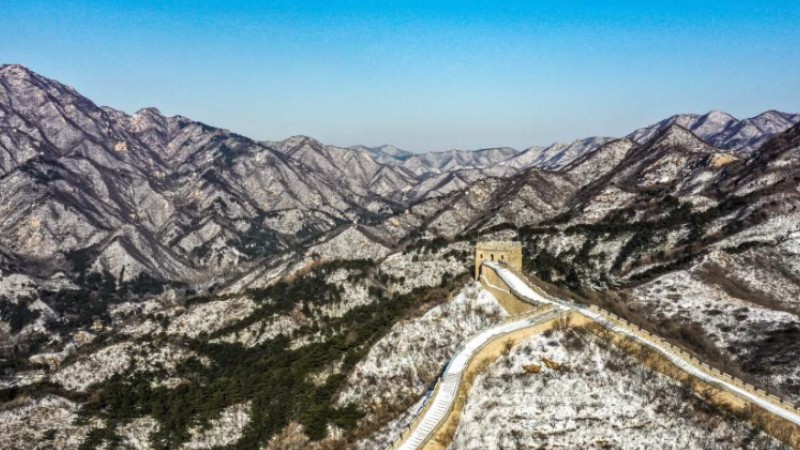Remains of palace, barns dating back 4,000 years found in central China
ZHENGZHOU, Dec. 21 (Xinhua) -- The remains of a palace and barns dating back about 4,000 years have been found at two important archaeological sites in central China's Henan Province, archaeologists revealed on Wednesday.
The two sites, the Zhuqiu Temple site in the city of Zhoukou and the ancient walled city at Xinmi, are believed to have been built in the Xia Dynasty (2070 B.C.-1600 B.C.). The new discoveries at the two established sites have provided archaeologists with further data on the activities and structures of that period in history.
The ruins of the walled city were discovered some years ago at Xinmi, on the eastern bank of the Zhenshui River, covering a rectangular area of 176,000 square meters. It is believed to be a large-scale, well-preserved city built in the late period of the Longshan Culture, a civilization found in the middle and lower reaches of the Yellow River.
Now, archaeologists working at the site have discovered a rammed-earth foundation structure they believe to be part of the city's ancient palace compound. The new discovery measures 60 meters long and 30 meters wide, and covers about 1,800 square meters. It is high at the center and low on all four sides, with a flat surface and rows of column holes evenly distributed.
"From the holes, we believe that the foundation belonged to a house complex with terraces in the south and north, cloisters in the east and west, and a yard at the center," said Li Bo, head of the excavation team.
Rammed-earth remains were also found to the east of the foundation, which archaeologists say is part of the same building cluster.
"Our previous excavation results showed that the central eastern area of the ancient city was the core of the palace complex," said Li. "The newly discovered remains, together with the foundations of a palace and corridor, constitute a complex in the quadrangle style."
He noted that the new findings could improve people's understanding about the layout of ancient cities, and provide important evidence for studies of the origin and development of Xia palace buildings.
The second new discovery took place at the Zhuqiu Temple site. Archaeologists working at the site since 2022 have unearthed more than 100 relics, including the remains of ash pits, ditches and architecture. The settlement venue dates back to the late Longshan Culture period and the Xia Dynasty.
Among the most important finds, there are the remains of two circular buildings consisting of earth columns and adobe walls that were used for grain storage, with a similar age and structure to the barns in the early Xia Dynasty.
Fang Lixia, who led the excavation team, noted that the discovery will provide new materials for studying the development level of dry farming agriculture, grain storage technology and the history of barn building in ancient northern China.
Photos
Related Stories
- Centuries-old artifacts found in China's relic-rich province
- Archaeologists unearth rare 7,000-year-old bottle in China's Henan
- House remains dating back over 4,000 years found in Inner Mongolia
- Centuries-old tombs discovered in south China metropolis
- Archaeology forum held in Shanghai, highlighting climate change, social sustainability
Copyright © 2023 People's Daily Online. All Rights Reserved.









